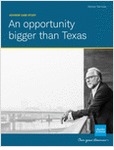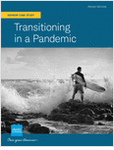The enormous new spending bill Congress has sent President Joe Biden could create a mountain of financial services law implementation work for federal agencies over the next 10 years.
The heart of the new Consolidated Appropriations Act, 2023 (CAA, 2023) consists of appropriations provisions needed to keep the federal government running. At press time, the White House had not yet announced the signing of the bill or arrangements for a signing ceremony, but the president had expressed strong support for the bill and indicated that he would sign it.
The House has posted a PDF file version of H.R. 2617, the bill that carried CAA 2023 through Congress, which clocks in at 4,126 pages long.
In addition to the meat-and-potatoes spending provisions, the package includes many general provisions that could have an enormous impact on your clients, your firm and your own personal life, such as sections dealing with ransomware attacks, pregnancy-related discrimination, efforts to improve pandemic preparedness and a fund set up to reward whistleblowers who tell law enforcement agencies about the efforts of terrorists and druglords to launder money.
CAA, 2023 also contains hundreds of pages of laws that apply directly to individual retirement accounts, defined benefit pension plans, defined contribution retirement plans, annuities, long-term care insurance policies, and other retirement savings arrangements, such as benefits for the survivors of U.S. Tax Court judges who are assassinated.
Most of the financial services provisions are in the Secure 2.0 section, in Division T. Others are in the registered index-linked annuity, or RILA, registration rule provision, in Division AA.
We pored through the PDF and found many dozens of implementation deadlines. Those deadlines will affect work lists at the Internal Revenue Service, the U.S. Department of Labor the U.S. Securities and Exchange Commission, the National Association of Insurance Commissioners, the National Council of Insurance Legislators, and state legislatures and state regulatory agencies.
The deadlines will also affect what organizations like the Securities Industry and Financial Markets Association, the Financial Planning Association, the Insured Retirement Institute, National Association of Insurance and Financial Advisors, Finseca will be asking members to talk about during fly-ins into D.C. and visits in lawmakers’ own jurisdictions.
One sign of how long implementation work could last: Federal and state agencies are still fleshing out the investment advice standards provision in the Employee Retirement Income Security Act of 1974, which was enacted 48 years ago.
Here’s a look at 50 of the Secure 2.0 and RILA registration parity deadlines that affect civilians, to provide a sense of what’s in there. In some cases, when we arranged the list, we assumed for the sake of year calculations that the official enactment date would be in 2022, and that few plans have plan years beginning from Dec. 28 through Dec. 31.
2014
1. Qualifying Longevity Contracts
Secure 2.0, Section 202
This section increases the amount of retirement plan assets an individual can move into a QLAC, or a lifetime income annuity with a benefits stream that can start far in the future and that qualifies for special tax treatment, from $125,000 to $200,000, and could serve as a vehicle for annuitizing a client’s retirement plan assets.
The section would also adjust the new $200,000 limit for inflation, and it would eliminate a rule that now caps QLAC premiums at 25% of a retirement plan participant’s plan asset total.
QLAC promoters see the structure of the product as a good way to minimize the cost of providing protection against longevity risk for retirees who live far past age 85.
Effective: Some provisions would apply to QLACs purchased or received in an exchange on or after July 2, 2014. Others would take effect on the date of enactment.
2022
2. Employer Plans, Matching Contributions & Roth Treatment
Secure 2.0, Section 604
This section would let an employer with a 401(k) plan, a 403(b) plan or a 457 plan offer employees a chance to have the employer contributions designated as Roth contributions. That means the contributions would not reduce the employees’ current taxable income.
Effective for: Contributions made after the date of enactment.
3. Early Distributions and Individuals With a Terminal Illness
Secure 2.0, Section 326
This section lets clients with less than 84 months to live take early distributions from qualified plans without paying the 10% excise tax on early distributions.
Effective: On the enactment date.
4. Excise Taxes for Excess IRA Contributions
Secure 2.0, Section 313
This section changes the rules governing when individuals have to pay extra excise taxes when they put too much cash into their IRAs.
Effective: On the date of enactment.
5. Required Minimum Distributions and Life Annuities
Secure 2.0, Section 201
This section would let the issuer of a lifetime income annuity provide up to 5% in annual inflation protection, a partial return of premiums after death, and other features to increase the contracts’ ability to get your clients’ attention.
Effective for: Calendar years ending on or after the date of enactment.
6. Simplification of Retirement Plan Overpayments
Secure 2.0, Section 301
This section would update the rules that apply when an employer pays the beneficiaries too much, and especially when the plan tries to get the excess payments back.
Effective: On the date of enactment.
7. Defined Benefit Pension Plan Mortality Tables
Secure 2.0, Section 335
This section calls for the IRS to modify defined pension benefits value calculations to eliminate assumptions that future mortality will improve by more than 0.78% in a future year. This provision reflects “material changes in the overall rate of improvement projected by the Social Security Administration,” according to the bill text.
Effective: On the date of enactment.
8 Tax Court Retirement Provisions
Secure 2.0, Section 701
This section includes several changes in pension annuity provisions for U.S. Tax Court judges, including provisions for the pensions of the surviving spouses and dependent children of judges who have been assassinated.
Effective: On the date of enactment.
2023
9. Retroactive First-Year Elective Deferrals for Sole Proprietors
Secure 2.0, Section 317
This section would give self-employed clients without employees extra time to put cash into new retirement savings arrangements.
Effective for: Plan years beginning after the date of enactment.
10. A Simplified Employee Pension Contribution “Revenue Raiser”
Secure 2.0, Section 601
This section would let an employer with a simplified employer pension plan offer a Roth account option, funded with employee contributions that do not reduce the employee’s taxable income.
Effective for: Taxable years beginning after Dec. 31, 2022.
11. Increase in Age for the Beginning Date for RMDs
Secure 2.0, Section 107
This section would phase in an increase in the starting age for required minimum distributions, or RMDs, from 72 to 75.
Effective: After Dec. 31, 2022. The RMD age would go up to 73 for individuals turning 72 after that date and before Jan. 1, 2033. The RMD age would increase to 75 for individuals turning 74 after Dec. 31, 2032.
12. Reduction in the Excise Tax on Failures to Take RMDs
Secure 2.0, Section 302
This section would reduce the excise tax to 25%, from 50%.
Effective for: Taxable years beginning after the date of enactment.
13. Distributions From IRAs to Charitable Giving Arrangements
Secure 2.0, Section 307
This section would affect clients who want to move up to $50,000 in individual retirement arrangement assets, one time, into split-interest charitable giving vehicles such as charitable gift annuities or charitable remainder annuity trusts.
Effective for: Distributions made after the date of enactment.
14. Inflation Impact Report
Secure 2.0, Section 347
This section would require the U.S. Labor secretary to prepare a study on the effects of inflation on retirement savings.
Effective: 90 days after the date of enactment, or sometime around April.
15. Retirement Plan Enrollment Incentives
Secure 2.0, Section 113
This section would let employers use “small, immediate financial incentives” to persuade employees to contribute to retirement plans.
Effective for: The plan year beginning after the date of enactment.
16. Administration for “Unenrolled” Plan Participants
Secure 2.0, Section 320
This section would ease notice requirements and other retirement plan administration requirements related to “unenrolled participants,” who, apparently, include former plan participants and other employees could participate in the plan but are not in the plan.
Effective for: The plan year beginning after Dec. 31, 2022.
17. Increased Credit for Small Employers That Start Retirement Plans
Secure 2.0, Section 102
This section would let employers with fewer than 50 employees get credit for up to 100% of the early administrative costs, up from 50% today.
Effective for: Taxable years beginning after Dec. 31, 2022.
18. Multiple Employer 403(b) Plans
Secure 2.0, Section 106
This section would make it clear that nonprofit employers with 403(b) plans can team up to offer the same kinds of multiple employer plans that 401(k) plan sponsors can offer.
Effective for: Plan years beginning after Dec. 31, 2022.
19. Pension Plan Lump-Sum Buyout Notice Requirements
Secure 2.0, Section 342
This section would require defined benefit pension plan sponsors offering the participants lump-sum buyouts to show how the value of the pension benefits stream promised looks when compared with retail individual annuities.
Effective: At least one year after the enactment date.
20. Pooled Employer Plans Modification
Secure 2.0, Section 105
This section would let employers that join together to offer a retirement plan name anyone other than an employer in the plan to be the entity responsible for collecting member employer contributions.
Effective for: Plan years beginning after Dec. 31, 2022.
2024
21. Registered Index-Linked Annuity Registration Parity
Division AA, Financial Services Matters, Registration for Index-Linked Annuities
This section, which is not part of Secure 2.0, would make it easier for life insurers to add new RILA contracts by requiring the SEC to develop a simpler RILA registration process.
Effective: 18 months after the date of enactment, or mid-2024.








 December 28, 2022 at 11:38 AM
December 28, 2022 at 11:38 AM












 Copyright © 2024 ALM Global, LLC. All Rights Reserved.
Copyright © 2024 ALM Global, LLC. All Rights Reserved.